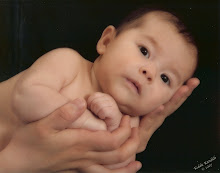Kawasaki Disease: Know the Symptoms
Visit www.kidsgrowth.com for more educational information.
Kawasaki Disease: Know the Symptoms Most parents have probably never heard much about Kawasaki disease, a relatively new illness first described in Japanese children by pediatrician Dr. Tomsaku Kawasaki. It is common for people to even joke about motorcycles when they first hear about a case. Kawasaki disease is worrisome because untreated the condition can result in serious damage to the arteries that carry blood to a child's heart muscle. Two to four weeks into the illness, a small number of youngsters develop a dangerous bulge (dilatation) in their coronary arteries. Untreated, the walls of the artery then become weak causing a more permanent dilatation (aneurysm) to form. Two other heart complications include infection of the heart muscle (myocarditis) and the formation of clots that block the flow of blood. Either can cause an actual heart attack or heart failure in the affected child. Kawasaki disease affects children between 6 months and 8 years of age, most younger than 2 years of age. Asian children are more susceptible than White or Black youngsters, and boys outnumber girls. There is no evidence that the disease is contagious, although siblings of affected children are more prone to getting the illness. In a typical case of Kawasaki disease, a child develops a high spiking fever (103 to 105 degrees F) that lasts for well over five days. Acetaminophen (Tylenol) lowers the temperature but it generally never completely returns to "normal." Other symptoms and signs include swollen lymph nodes in one side of the neck, sore throat, irritability, fatigue, a bright red tongue, swollen palms and soles, bloodshot eyes without discharge, dry cracked lips and a skin rash on the chest. The source of this rare pediatric disorder remains a mystery. A bacterial or viral origin has been suggested because the illness acts like an infectious disease. Researchers have put forward many different theories trying to find the cause. Diagnosis within the first 10 days of the illness and the institution of treatment dramatically reduces a child's chances of serious complications. Unfortunately, Kawasaki's disease is a great masquerader and acts like several other common childhood ailments. Typically, many youngsters with Kawasaki disease have been diagnosed with a strep throat and treated with antibiotics. When their irritable, sick child shows no signs of improvement, parents often become frustrated and frightened. Even when rechecked by the child's physician, the disease may be confused with a medication reaction, measles, or another viral infection unless other symptoms of Kawasaki Disease are present. There are no lab tests as yet to help pediatricians confirm a case of Kawasaki disease. Therefore, a diagnosis is made when the child meets certain criteria. These include a fever over 103 degrees F lasting five days or more, and four of the following:
red throat and dry cracked lips
a red rash, primarily on the trunk
reddening and swelling of the hands and feet
enlarged lymph nodes in the neck
redness of the whites of the eyes without dischargeFortunately, effective treatment is available. Early in the course of Kawasaki Disease, administration of high dose intravenous immunoglobulin (IVIG), a purified blood plasma product containing disease-fighting components, produces dramatic improvement in the child's condition. In addition, aspirin, started in high doses, helps reduce inflammation and lower fever. In general, aspirin is not recommended for children, but when prescribed by a physician for the treatment of a particular disease, it is not associated with an increased risk for Reye's syndrome. Exactly how the combination of aspirin and IVIG work to prevent the coronary artery abnormalities is still unknown, but so far its "track record" is very good. Following discharge from the hospital, close follow-up by a pediatric cardiologist is essential. Preventing Kawasaki disease is more difficult than treatment, since it is impossible to say what to avoid. All parents can hope is that researchers will soon discover what situations are associated with the illness, and then avoid those conditions. It has been nearly 30 years since Kawasaki disease was first described and much remains to be learned about this mysterious condition. Fortunately, early recognition and prompt treatment with aspirin and intravenous immunoglobulin can prevent the serious heart complications in almost all children.
Copyright © 1999-2009 KG Investments, LLC.
The leader in online pediatric practice management. This information is for educational purposes only and it should be used only as a guide.
Subscribe to:
Post Comments (Atom)




































No comments:
Post a Comment